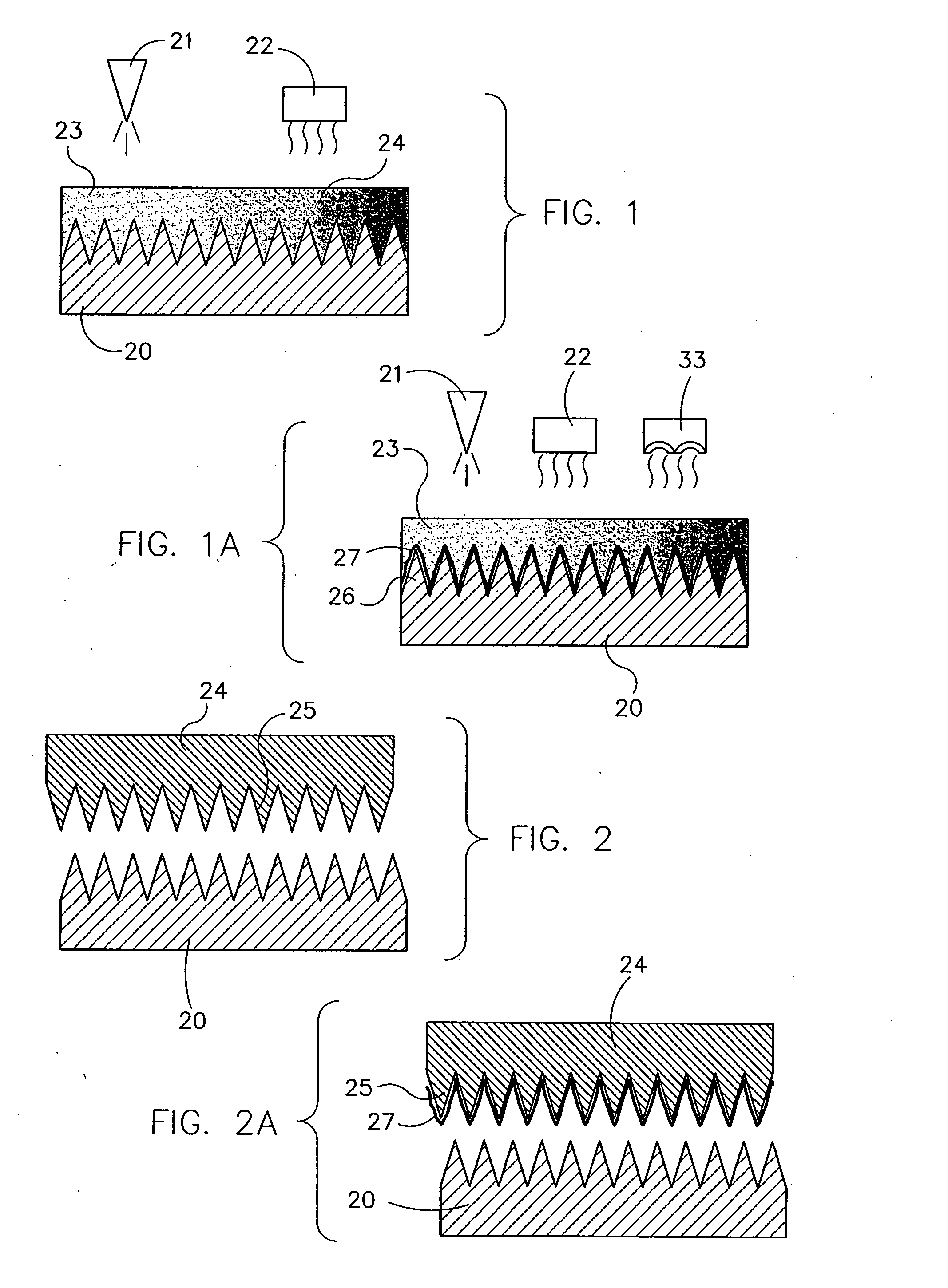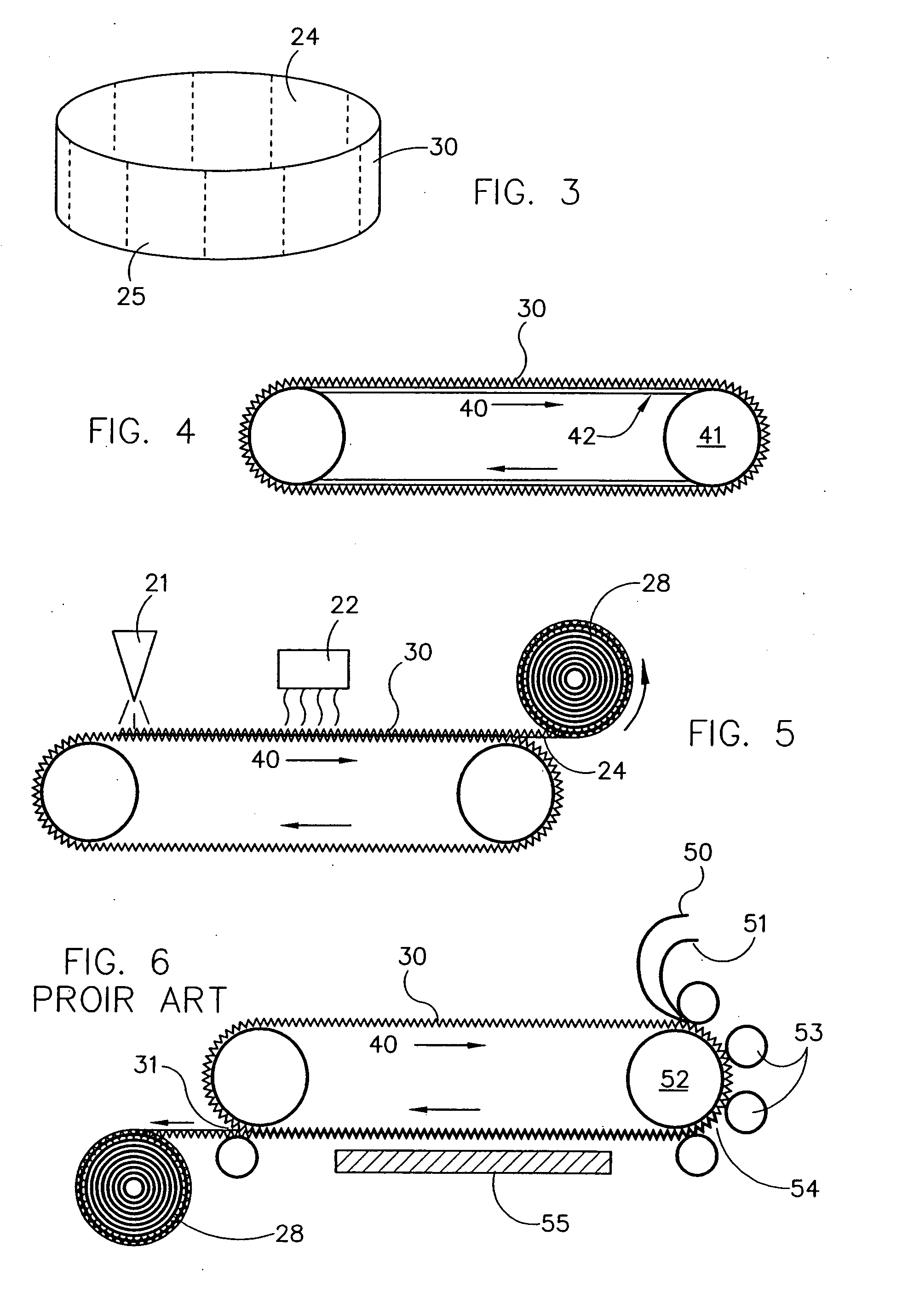Process and apparatus for fabricating precise microstructures and polymeric molds for making same
a technology of polymeric molds and microstructures, which is applied in the field of microstructured and nanostructured products, can solve the problems of only limited speed, and achieve the effects of multiple cost and process advantages, fast and less expensive, and no cost or tim
- Summary
- Abstract
- Description
- Claims
- Application Information
AI Technical Summary
Benefits of technology
Problems solved by technology
Method used
Image
Examples
Embodiment Construction
[0073]Referring to FIG. 1, a method to make polymeric mold sections is shown including a master pattern 20 made of electrodeposited nickel having a representative lenticular microstructure on the surface. Metal molds or tools for producing such devices are well known in the optics art.
[0074]An electrostatic gun 21 such as Wagner's Corona PEM-C3 Manual Spray Gun is used to apply a 0.004″ layer of epoxy based 445-100-1 CORVEL® GREEN powder 3 from Rohm and Haas Morton Powder Coatings, with a particle size of 10 microns. A source of infra red radiation 22 such as an electric or gas IR emitter at a temperature of 350° F. (176° C.) for two minutes is used to melt and flow the powder 23 which then cures as a polymer film 24. The master pattern 20 may be metal or polymeric as long as it is dimensionally stable at the cure temperature required for the polymers being applied. One of the primary advantages of using powder to form the polymeric layer over the master pattern is that it fills the...
PUM
| Property | Measurement | Unit |
|---|---|---|
| thickness | aaaaa | aaaaa |
| temperatures | aaaaa | aaaaa |
| temperature | aaaaa | aaaaa |
Abstract
Description
Claims
Application Information
 Login to View More
Login to View More - R&D
- Intellectual Property
- Life Sciences
- Materials
- Tech Scout
- Unparalleled Data Quality
- Higher Quality Content
- 60% Fewer Hallucinations
Browse by: Latest US Patents, China's latest patents, Technical Efficacy Thesaurus, Application Domain, Technology Topic, Popular Technical Reports.
© 2025 PatSnap. All rights reserved.Legal|Privacy policy|Modern Slavery Act Transparency Statement|Sitemap|About US| Contact US: help@patsnap.com



